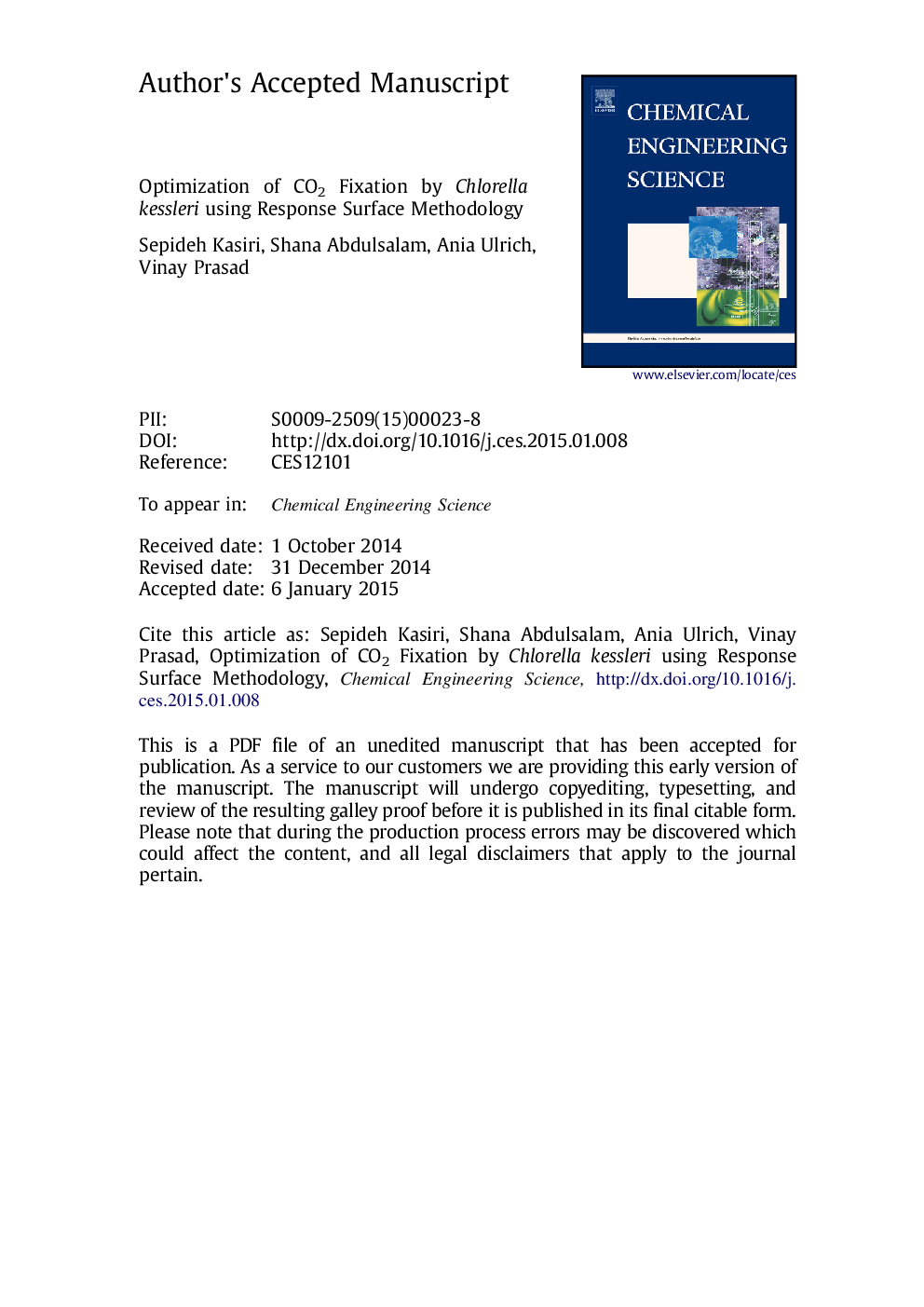| Article ID | Journal | Published Year | Pages | File Type |
|---|---|---|---|---|
| 6590118 | Chemical Engineering Science | 2015 | 32 Pages |
Abstract
Biological fixation of CO2 using microalgae is an environmentally sustainable option for CO2 capture. In this study, response surface methodology (RSM) was used to model the CO2 uptake rate and specific growth rate of Chlorella kessleri, which had been identified previously as a promising strain for CO2 fixation, cultivated in oil sands process water (OSPW). The quadratic models developed were used to determine the optimal sets of CO2 concentration, phosphate concentration and light intensity for CO2 uptake rate and specific growth rate in batch operation. The optimal CO2 concentration, phosphate concentration and light intensity of 35%, 29 mM and 70 μmol photons mâ2 sâ1, respectively, were estimated to maximize the CO2 uptake rate to 65.03 mg/L/day. Also, the maximum specific growth rate of 0.310 per day was obtained at 22% CO2 concentration, 29 mM phosphate concentration and 70 μmol photons mâ2 sâ1. Finally, a multi-objective optimization technique was used to maximize the CO2 uptake rate and specific growth rate simultaneously. The optimal Pareto set was found to occur at CO2 uptake rate of 62.98 mg/L/day and specific growth rate of 0.309 per day at 28% CO2, 29 mM phosphate concentration and 70 μmol photons mâ2 sâ1 light intensity. Thus, each of the optimal conditions correspond to high phosphate concentration and high light intensity in the ranges investigated, while the CO2 concentration varied between high and intermediate levels in the range investigated.
Keywords
Related Topics
Physical Sciences and Engineering
Chemical Engineering
Chemical Engineering (General)
Authors
Sepideh Kasiri, Shana Abdulsalam, Ania Ulrich, Vinay Prasad,
